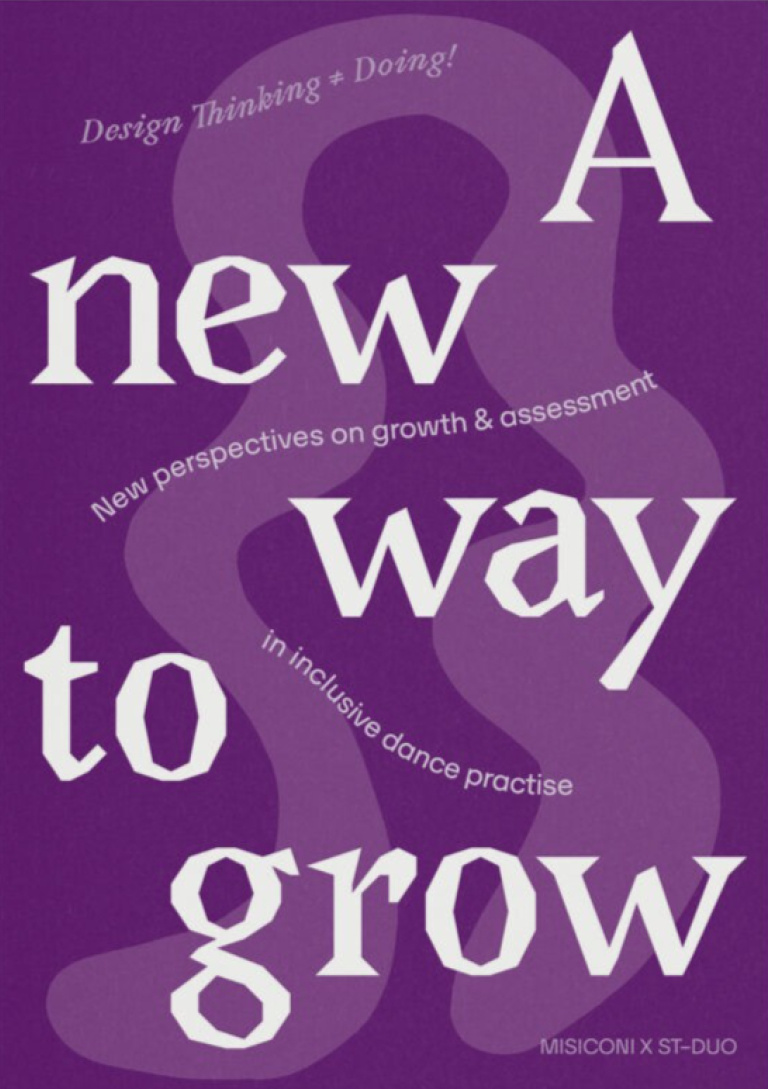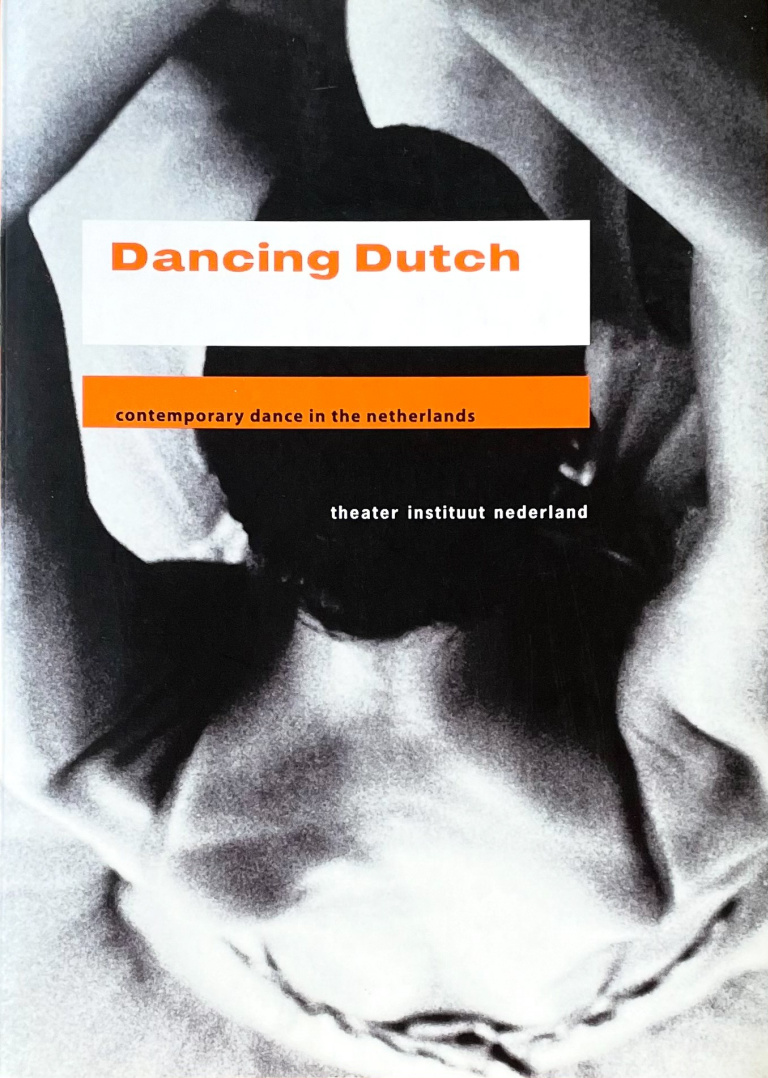Book of the Month
Each month the dansMuseum spotlights a book worth reading. This month's book is:
A new way to grow
new perspectives on growth and assessment
MISICONI X ST-DUO (2024)
"This publication documents the research and the first prototypes for an inclusive toolkit that supports Misiconi’s inclusive dance (education) method. There is a further explanation of the talent development route and Misiconi’s pedagogical approach, how design can enrich education and where there is potential to apply innovation. In addition, professionals and experts from the field have been asked to explore specific themes with the initiators in order to enrich the designs."

Check out below our list of previous books of the month:
Dancing Dutch
Contemporary Dance in the Netherlands 1975-2000
Coos Versteeg (Theater Instituut Nederland, 2000)
From the preface:
"This book is intended as an illumination for dance people from outside the Netherlands who often ask themselves how the Dutch created such a rich dance landscape in less than fifty years, starting from nothing. Yet, it is the very lack of a distinguished tradition that has helped the creative forces to develop in an uninhibited, inventing, combining, experimenting way, striving to make up for lost time and for the absence of provisions and an institutional base from the past. Political stability, economic welfare and a cultural climate prone to innovation and renewal have been conducive factors. Cosmopolitan openness and curiosity went hand in hand with the egalitarianism that, especially after the 1960s, challenged the established institutional arrangements and inherited hierarchies. "

Over dans gesproken
Corrie Hartong (AD. Donker, 1982)
"This book is a welcome addition to the dance books that have appeared recently. Those usually deal with dance history or important individual figures. Corrie Hartong's book, however, focuses on the psychological backgrounds of dance, the role of dance in society, and its relationship to other forms of art. For that reason, it can be seen as an important introduction for the broader audience beyond professional circles; now that more and more people are becoming interested in the art of dance, a book that highlights its background is of great significance."
*Translated from the backcover

Gesprekken met Makers: Nita Liem
Fransien van der Putt (De Nieuwe Dansbibliotheek, 2024)
A long interview with artist Nita Liem about her work, including her working methods, artistic practice and development.

Dans! Denk! leven en werk van Krisztina de Châtel
Désanne van Brederode (Amsterdam: Querido, 2017)
'Thinking without a body is nothing at all.' In the spring of 2015, choreographer Krisztina de Châtel approached Désanne van Brederode to ask if she would write about her life and work, in relation to philosophy.
The result, Dance! Think!, is a book about the connection between moving and thinking. In De Châtel's words, “What matters is to show how much life, dance and thinking can be understood as a unity. Dancing can be as much a form of reflection as philosophizing is, and conversely, philosophizing presupposes movement.' A book about the importance of rhythm, about different layers of music, and about how a body expresses what resides within it (the soul?). But also about De Châtel's personal life, her parents, her youth in Hungary, being unrooted in the Netherlands, about love and commitment, teachers, teaching and being in the middle of the world.
Dance! Think! is a beautiful and inspiring book that came about in a special collaboration. A book about thinking with hands and feet. And especially with the heart.

Scapino Vertelt
Henny Visch (drawing) (Amsterdam: Het Parool, 1965)
On the occasion of the 20th anniversary of the Scapino Ballet, Scapino Vertelt was published by the book publisher of Het Parool. The proceeds of the publication went to Scapino.

Morgen dans ik beter
Conrad van de Weetering (Den Haag: Daamen N.V, 1961)
Conrad van de Weetering was a dancer, choreographer, writer and poet. His first book, written in 1961, while still a dancer at the Dutch National Ballet, was Morgen dans ik beter.
From the introduction:
“...a dancer develops, apart from a solid technical basis and good guidance, mainly in practice and my practical experience, is undoubtedly greater tomorrow than today.”
*Translated from Dutch

Het Dansende Lichaam: Klassieke Teksten over Hedendaagse Dans
Johan Reyniers (Red.) (Leuven: Kritak & Klapstuk, 1994)
From the back cover:
“What makes people dance, what moves others to put this dance on a stage, to watch it, to consider it as art? What can dance (still) mean to us, in a time of virtual images and a disappearing body?”
With twenty-five essays, reflections, interviews and stories, Het Dansende Lichaam attempts to leave a trail "so that we can watch a performance less innocently, more armed."
*Translated from Dutch

